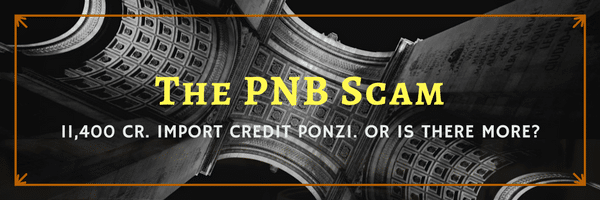(category)CM Strategy
Forget Stocks for a bit. Get your Asset Allocation rightForget Stocks for a bit. Get your Asset Allocation right
Anoop Vijaykumar•

You've heard of the three C's by now. Courage. Cash. Conviction. You're probably sick of them already.
For the uninitiated, the three C's are meant to galvanize the timid investor trying hard to avert her gaze from a screen dripping red.
Don't you know, they say, if your horizon is longterm, you can't go wrong with equities?
Equities outperform everything else out there. But great victory demands great sacrifice. So build Conviction, be Courageous, and deploy that Cash! Three C's.
But where's the cash? You wonder to yourself. Weren't the same C's called on to invest when markets had just made a new high? You clearly remember the argument at that time. Price doesn't matter if you hold quality businesses for the long term. Now sounds like something a seller would say.
But you look through your holdings anyway. There's that little bit of cash leftover from finally selling that stock you held since the 2008 crash. What's the IRR on an 80% loss spanning 12 years, you wonder. Then there's that pittance of a dividend from your current portfolio. At least the dividend yield has perked up since prices halved in two months. So much for Growth at a Reasonable Price.
At least you have something. You look at the screen. Eyes, flitting from one deep red occupant to another. Buy more of existing stocks that have lost so much?
Or start afresh? Those defensive stocks that were always ridiculously priced have dropped only half as much as the rest of the market. In fact, they're moving up even as you watch. Up nearly 2% for the day!
It makes sense that they would be the first to recover (Conviction. You say to yourself). You buy.
A month later they're indistinguishable on your holdings screen from the rest. A sea of red.
You curse (under you breath). Goddamn chickens*** investing catchphrases.
The problem really is our need to seek out stories that appeal to our limbic system, "emotional brain" as its called.
For instance, the one about the inherent God-given superiority of equities over more secure financial instruments for long-term performance.
After all, How can part ownership in a thriving business with all the inherent uncertainty not be far more rewarding than a modest yet fixed rent for your money?
Put another way, the theory and popular perception says...
Over a long enough time frame, Equity gives (significantly) higher return than Debt. Ergo, Debt is for folks nearing retirement and/or cannot afford to invest for the "long term" while Equity is the rocky but certain path to financial independence.
Equities beat Fixed Deposits. Duh.
Here's proof.
Chart shows SBI 1 year Fixed Deposit Rates from 1987, currently at 5.9%
 Chart shows the comparison between putting ₹100 into a 1 year FD and rolling it over for the next 29 years versus buying and holding the NIFTY starting Jan 1991.
Chart shows the comparison between putting ₹100 into a 1 year FD and rolling it over for the next 29 years versus buying and holding the NIFTY starting Jan 1991.

By putting the money into the NIFTY, you end up with 2.5x the value you would have by putting that money into 1-year Term Deposits for 29 years, from 1992 to 2020. That number was an even more convincing 3.6x just a few weeks ago, as of Jan 14th, but still comprehensive. Note we ignored taxes on the FD interest because there are ways to set that off against costs like business expenses.
So far so good.
But...
Consider these two points:
- The NIFTY investment suffers drawdowns as much as 60% (Oct 2008) from its previous peak. The FD investment never closes below its previous value.
- Nine years from the start of our little thought experiment, on 20th Sep 2001, the NIFTY investment dips below the value of the Fixed Deposit investment, albeit briefly
But this thought-experiment is a poor analogy to actual investing. People don't wake up one morning, shovel their life savings into a financial instrument, and then forget about it for 29 years. Except real-esate investors maybe.
Real-world investing happens over time. If they're doing it right, people start investing when they first can, and add to that amount over time, increasing subsequent contributions as their earnings increase. In MF-speak, people SIP.
Equities still beat Fixed Deposits, just not by that much
If you're still reading, here's where it gets interesting. This time the NIFTY investment ends just 1.3x times the FD investment, down from 1.8x before the ongoing correction. And for a lot more heartburn than the steady growth of the FD.
Note the ending values in this chart are not comparable to the first chart because we're investing way more than the one-time ₹100 we invested in the first chart.
Also, the NIFTY investment trails the FD investment for a full 20% over 29 years. That's almost 6 years total. Imagine being outperformed by the lowly FD for that duration.
But this is not an #FDsahihai post. It's an Asset Allocation post. So what does all this mean for how you need to think about your Asset Allocation.
Allocate, first Allocate
A good Portfolio Management strategy consists of three independent but critical components [paraphrased from 'Pioneering Portfolio Management' by David F. Swensen]:
- Asset Allocation - The basket of distinct asset classes you allocate across in a pre-defined percentage
- Market Timing - When and how much you weight (tilt) one asset class versus another
- Security Selection - What specific securities you buy within each asset class
The most critical by far, is #1, deciding the mix of assets and their relative weights to match your investment objective. We have thoughts about market timing, but that's for another post.
But most investors fixate solely on #3, "what stocks should I buy"? Coffee Cans? GARP? QAAP (Quality at any price)? Low PE?Hail Mary? (I just coined this one to not omit the good folks ploughing into Yes Bank, Vodafone Idea, Jet Airways...)
But stocks are risky. All of them. When broad corrections hit, they correct, from the debt-laden dubious promoter-driven to the bluest blue-chip.
Sharp corrections hurt. They make you freeze, and look for the exit. You do whatever you can to make the discomfort stop. That's when big mistakes happen.
Clear Asset Allocation rules can help reduce big mistakes.
A NIFTY + Debt Portfolio
What if instead of holding only the NIFTY, we put part of our investments into a safer instrument? For the sake of simplicity we pick the unsexiest instrument there is: 1-year Term Deposits. (Our CM Fixed Income Portfolio is a combination of three debt funds but let's keep it simple for this discussion)
Here's how an investment that SIPs annually into a combination of the NIFTY and an FD compares with only the NIFTY
Here's the same chart on a logarithmic vertical scale which helps show the rate of growth instead of absolute values.
 The NIFTY-only portfolio comes out ahead of both the Debt-only and the 50-50 portfolio.
The NIFTY-only portfolio comes out ahead of both the Debt-only and the 50-50 portfolio.
However, the shaded regions are where the FD-only portfolio matched or even beat the equity and 50:50 portfolios.
So equities are not invincible. Note how the 50:50 portfolio predictably falls less than the Equity-only portfolio in tough times.
Here's a summary table of annualized returns, worst year returns, and maximum drawdown from varying NIFTY+FD combinations over different durations.
Table shows annualized returns from the start of 2020 looking back over 5-10-15 and so on years. Read that again. These returns do not consider the market decline we are seeing in 2020.
 We haven't taken dividends into account here. Tacking on an additional 1-1.5% to annual returns to the equity component improves things, only a bit.
We haven't taken dividends into account here. Tacking on an additional 1-1.5% to annual returns to the equity component improves things, only a bit.
Now let your eyes travel each row from left to right and see the difference in annualized returns from being entirely in equities to being mostly in 80% debt (FD). Also look at the bottom rows in red. Worst annual returns and peak to trough drawdowns.
A magical thing happens when you combine a volatile asset class (equities) with a safe, staid asset like debt. You give up a little bit of the return for a significant reduction in the downside that scrambles so many investor minds in bad times.
Wait. We're not done. What if we did Asset Allocation properly?
NIFTY+Debt Portfolio with annual rebalancing
So far we were just adding fresh money in the target proportion but letting existing funds drift with markets. Doing asset allocation properly means to rebalance from time-to-time to bring portfolio weights back to target.
Here's the earlier NIFTY vs 50:50 vs FD chart. Except, this time with annual rebalances to come back to the 50:50 target
 It's not clear from the chart labels that the NIFTY ends at 2,513.8 while the 50:50 portfolio is at 2,521.7 (marginally higher). Yes, courtesy the on-going correction, the 50:50 portfolio is beating the NIFTY-only portfolio over a 29-year time horizon.
It's not clear from the chart labels that the NIFTY ends at 2,513.8 while the 50:50 portfolio is at 2,521.7 (marginally higher). Yes, courtesy the on-going correction, the 50:50 portfolio is beating the NIFTY-only portfolio over a 29-year time horizon.
Here's the summary table of annualized returns (without the 2020 decline) when we rebalance every year at the same time as adding the SIP.
Bottomline
- Contrary to perception, Equities in India have not delivered blockbuster returns compared to more conservative asset classes
- A combination of a volatile but high expected return asset with even basic debt dampens portfolio moves while retaining most of the return i.e. the closest thing to a free lunch
So, what's the right Equity-Debt allocation for me?
- Look at that last table of annualized returns. Remember to add ~1.4% of dividend yield to the NIFTY return and the percentage of that 1.4% to the equity component of the other columns. e.g. 20% X 1.4% = 0.28% to the 20:80 portfolio
- What is the lowest relative return you can live with?
- What is the maximum drawdown at which you will not lose sleep?
In uncertain times like today, the awareness that no matter how deep the correction, a part of your investments will remain unscathed and will keep growing, can make the difference between losing the plot and making the right decisions.
So, Allocate, first Allocate. Stick to that allocation i.e. commit to rebalancing at defined intervals. Only then look for that blockbuster portfolio.
We did an extensive analysis of the results of a diversified portfolio of Debt, Domestic Equities, International Equities and Gold would have performed over the long-term Indian investor.
This analysis is in a two part post:
How to think about Asset Allocation in India
At Capitalmind, we recommend all investors some allocation to our Fixed Income Portfolio and the remaining across our equity portfolios (Market Index, Long-Term MultiCap, Momentum, Dividend Yield) depending on your specific situation and risk appetite.
We are currently revamping our LongTerm Portfolio based on a framework that considers a few different scenarios on when and which stocks will start to recover when they do. More about this in the next few days.
Talk to us @capitalmind_in and @CalmInvestor on twitter. Tell us how you think about Asset Allocation.
For more insightful articles, equity and fixed income portfolio strategies, become a premium member today. Use Code CMPOFF10 to get 10% off regular price if you sign up during the lockdown.
Related Posts
Make your money work as hard as you do.
Talk to a Capitalmind Client AdvisorInvesting is not one size fits all
Learn more about our distinct investment strategies and how they fit into your portfolio.
Learn more about our portfoliosUnlock your wealth potential
Start your journey today





